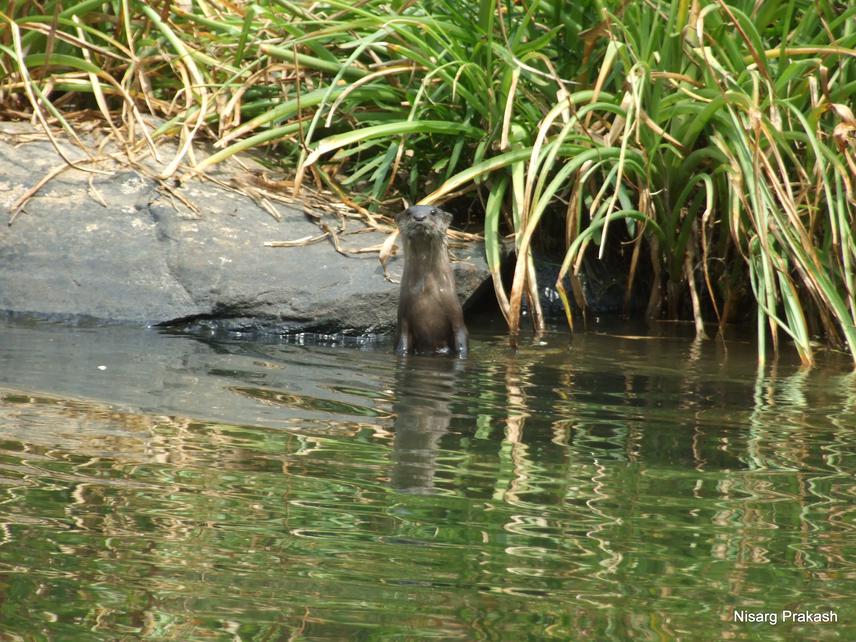Nisarg Prakash
The main objectives of the study of the study is to monitor otter populations both inside and outside protected areas and enlist the help of stakeholders to prevent poaching and conflict.

Aonyx cinerea
Otters are ambassadors of wetland ecosystems. Being top predators, they have been severely affected by loss of riparian habitats to agriculture and other anthropogenic activities like sand mining, hydroelectric projects and the usage of dynamite in fishing. Cauvery is one of the major rivers of peninsular India and is important not just for otters but also for millions of people dependent on it for their livelihood. Being one of the last remaining strongholds of the smooth-coated otters it is important to monitor surviving otter populations outside protected areas and to identify threats to their existence. Our study uses questionnaire surveys, direct (visual) and indirect sign surveys, and camera traps to identify, enumerate and monitor smooth-coated otter populations outside protected areas and across a gradient of protection regimes in the Cauvery.
Stakeholders form an integral part of the monitoring programme. We propose, as a desirable outcome from this project, to elicit local involvement in otter protection by facilitating the creation of an ‘Otter Watch’ program: a genuine eco-tourism initiative that will provide sustainable livelihoods to a few local people who are carefully chosen by us.